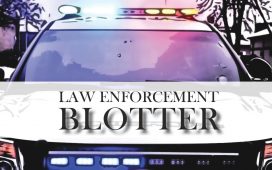Minnesotans are gearing up for the firearm deer season opener on Saturday, Nov. 9, with bow hunting season already underway.
Each hunter is uniquely positioned to help scientists better understand who visits and eats offal, the internal organs of a butchered animal left behind by hunters after field dressing.
Grace Milanowski, University of Minnesota (UMN) Extension’s program coordinator for the Offal Wildlife Watching Project, answers questions about how you can participate.
Q: Why are hunters good candidates for participatory science? Participatory science, also known as community or citizen science, is research and monitoring that relies on contributions and observations from members of the public. Hunters have been long-time contributors to monitoring efforts and supporters of science-based wildlife management.
Hunters have historically contributed samples such as teeth of black bear, waterfowl wings, deer samples for mail-in chronic wasting disease test kits and remote camera observations that are all useful tools to monitor the health and distribution of species.
Many hunters already use tools, like remote cameras, to scout hunting locations. We’re tapping into this knowledge, experience and key observations from hunters to gather more information about how hunter-provided gut piles are being used by wildlife around the state.
Q: How do UMN scientists study offal? The Offal Wildlife Watching Project is aimed at understanding how hunter-provided offal is used by wildlife in Minnesota. UMN researchers ask volunteer hunter participants to set up remote cameras on the offal they leave behind immediately after they field dress their hunted deer. These cameras collect images of scavenger visitors like fishers, foxes, eagles and other raptors, all the corvid species of birds in Minnesota, woodpeckers, domestic dogs and cats and even other deer.
Over 325,000 images of offal visitors have been collected since the project’s inception, with 2024 being the sixth year of data collection. All project images are posted on the online platform, Zooniverse, where volunteers from all over the world can log on and help identify and classify the wildlife in the images.
Q: How can people join and do you need to be a hunter to help?
Participation from both bow and firearm hunters throughout the state is welcome. Contributions from bowhunters who are hunting earlier in the season and any hunters in southwestern Minnesota are especially needed.
Hunters may use their own cameras or receive the loan of a camera by mail. All shipping costs are covered. Participants can hunt as they normally do and then set the camera up as soon as they’re done field-dressing their deer.
Cameras stay out for one month and then images are used to identify and analyze any visitors. Hunters should be aware of camera regulations in the areas they hunt as there are restrictions to setting up cameras on some public land. Hunter sign-up and camera setting protocols can be found at
.
Anyone with an internet connection is welcome to help identify and analyze project photos at:
zooniverse.org/projects/embeller/offal-wildlife-watching
.
Q: What do you hope to discover?
We’re trying to learn more about how this nutritious food source is being used by Minnesota wildlife. Offal is a human-provided food source that typically wouldn’t be available to wildlife without wide-scale hunting. Early fall is when deer are at peak physical fitness and aren’t typically successfully hunted or scavenged by other wildlife.
We can analyze a lot of different aspects of offal consumption by simply having location data (which we don’t share), a timestamp and images of scavengers. For example, one hunter participant alerted us to new behavior observed of owls and bobcats using gut piles as opportunistic rodent hunting grounds. We have also analyzed how patterns of scavenger visits to offal vary throughout different periods of time and by habitat.
Q: What has the project’s impact been across Minnesota? We have documented 60 different species of offal visitors since the inception of the project. In our fifth year of data collection, we added 10 new species to that list. We also engaged over 350 hunter participatory scientists who have helped us collect data over the years.
Many participants are surprised and curious to see firsthand how the offal they left behind was consumed. There is still a lot of untapped potential out there, as Minnesota sold over 300,000 deer tags over the past three years. For more information or questions about the project, check out our website or email us at offal@umn.edu.
Grace Milanowski is University of Minnesota Extension’s program coordinator for the Offal Wildlife Watching Project. Her areas of expertise include habitat conservation, wildlife surveys and monitoring and facilitating volunteer contributions to conservation and ecological research.










